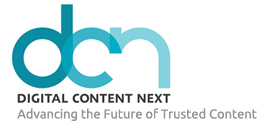For 25+ years, the open web ran on links. You typed a question into Google, got ten blue link results, and clicked on the one that resonated most with you.
Not anymore. Generative AI is shifting user behavior, from querying and clicking to asking and consuming inside tools like ChatGPT, Gemini, and Perplexity. Google’s AI Overviews rewrite results into ready-made answers, turning what used to be a page of links into a single, synthesized suggestion. In its place, we’re entering a recommendation web—a world where every surviving link must have strong context and credibility.
In the wake of AI overviews, search isn’t dying, but the link economy is.
At Raptive, we see this shift firsthand across 6,000+ publisher partners generating billions of monthly sessions. The data reveals a re-ordering of trust. The winners will be those who modernize for this “answer-first” landscape without abandoning the fundamentals.
Search is no longer a traffic channel; it’s a reputation test.
Here’s what we’re learning about staying visible and resilient in this new era of search, and what digital media leaders should prioritize.
1. Traffic patterns are fragmenting
Searches are growing, but click-through rates are declining. Similarweb data shows that zero-click searches have climbed from 56% to 69% year-over-year as Google’s AI Overviews increasingly answer questions directly on the page. Search behavior is being redistributed and discovery is flowing across new channels: AI assistants, social algorithms, recommendation engines, and Google Discover.

Executive takeaway: Continue investing in high-quality, differentiated content that strengthens brand reputation. Move away from lightweight informational content that can be commoditized by AI. In a world of algorithmic discovery, originality and authority are the only currencies that hold value.
2. Quality and authorship signals are non-negotiable
Google’s June 2025 Core Update reaffirmed that expertise and trust win. In our analysis, sites with clear bylines, full author names, and robust About pages outperformed those without. Those signals are key ranking factors tied to credibility.
Executive takeaway: Audit your trust signals. Every article should clearly identify who wrote it, when it was last updated, and why readers should trust it. Invest in author pages, structured data, and visible expertise across verticals. “Real names, real voices” is the new SEO.

3. Consistent content activity drives resilience
In a study across independent creators, we found that sites publishing one new post and updating at least five existing ones monthly were far more likely to gain traffic after the June update. We saw the same correlation among larger publishers: steady, consistent activity signals both relevance and reliability.
Executive takeaway: Operationalize content cadence. Build processes for regular updates to evergreen content, and treat publishing frequency as a core SEO health metric, not just an editorial one.
4. Engagement metrics are rising in importance
Across our network, URLs that gained traffic after Google’s June update had 3x more comments and 3x more engagement than those that declined. AI and Google’s algorithms alike are rewarding proof of reader value.
Executive takeaway: Design for engagement and invite readers to interact. Encourage user reviews, comments, and feedback loops. Treat engagement as a credibility metric.
5. Discoverability is shifting toward recommendations
As AI search becomes more personalized, Google Discover is growing as a key traffic source. Discover rewards relevance and freshness, often outperforming traditional search in volume and conversion.
Executive takeaway: Optimize for recommendation ecosystems. Publish consistently, pair content with strong visuals, and prioritize depth and originality. These factors correlate directly with Discover visibility.

Why “modern SEO” still wins
Despite the hype around “GEO” (Generative Engine Optimization), “AEO” (Answer Engine Optimization), and a growing alphabet soup of new acronyms, the fundamentals of optimization haven’t changed. Today’s AI search is just a bunch of classical searches in a trench coat. Modern SEO—writing for readers, demonstrating expertise, and maintaining technical excellence—is what allows your content to surface in both traditional and AI-driven results.
And while the conversation around AI traffic grows louder, it’s important to remember that AI surfaces account for just 0.02% of total traffic today. In fact, our research found that pages ranking in Google’s top three positions are twice as likely to appear in AI Overviews as those outside the top three.
Good SEO is good GEO.
And good GEO begins with genuine expertise.
What to prioritize next
For digital media executives guiding strategy in 2025 and beyond:
- Diversify traffic sources: Balance your reliance on Google with growth in newsletters, Discover, and direct audiences.
- Double down on quality and cadence: Content activity and freshness are measurable, defensible advantages.
- Audit trust and transparency: Author identity, About pages, and schema markup now influence both human perception and algorithmic ranking.
- Invest in engaged communities: Reader interaction and loyalty protect against volatility in algorithms and AI tools.
- Stay pragmatic: Don’t chase new acronyms or “AI hacks.” Track changes, test cautiously, and keep your team focused on fundamentals.
The bottom line
The future belongs to those worth recommending.
People still want what they’ve always wanted: answers they can trust, ideas that make sense, and trustworthy sources. That’s where publishers matter most—not as content factories, but as champions of quality and original content that real people can count on.
At Raptive, our mission is to ensure that independent voices remain discoverable, trusted, and economically viable in an AI-mediated web. Because the end of links doesn’t have to mean the end of independence—it can mark the beginning of a new era of credibility.
That’s not just good SEO; it’s good business. And, more than that, it’s good humanity.

 / An inside look at the business of digital content
/ An inside look at the business of digital content Archive
Archive


















